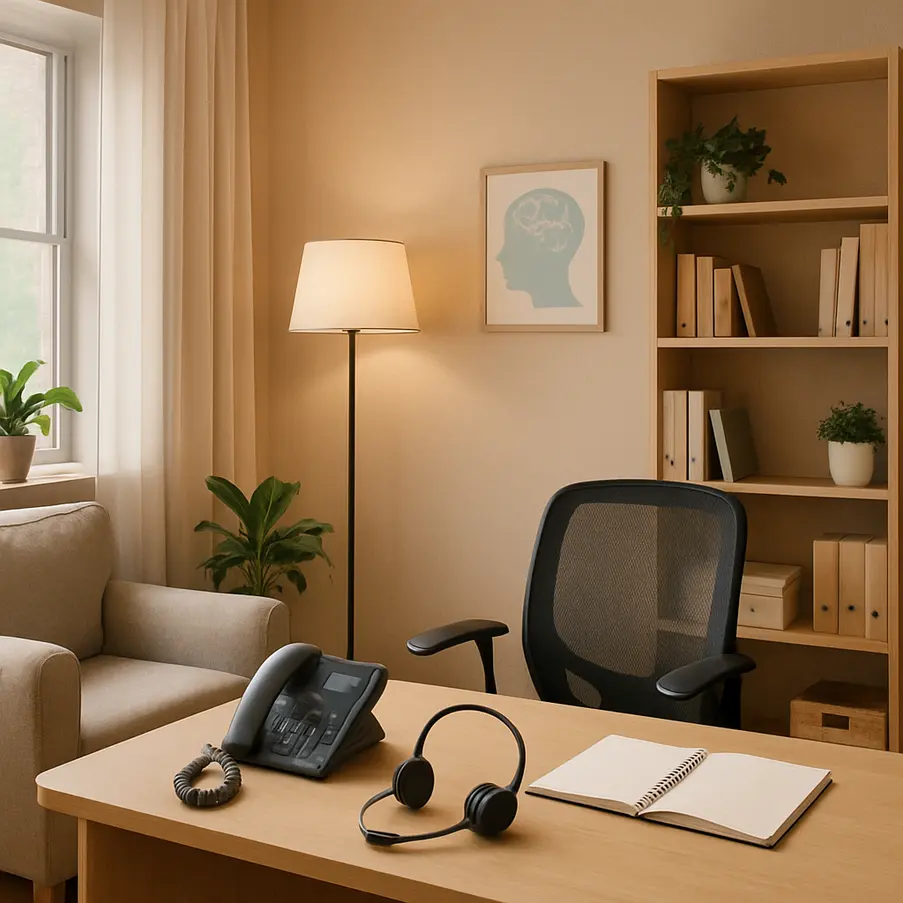Mobility Exercises for Desk Workers
For many desk workers, long hours seated at a workstation can lead to discomfort and even injury. Incorporating mobility exercises into your daily routine is essential to counteract the negative effects of prolonged sitting. By focusing on flexibility and mobility, you’ll not only alleviate tension and prevent musculoskeletal issues but also improve your overall wellbeing. This guide explores effective strategies and exercises tailored for desk workers, designed to foster a healthier, more productive work environment.
Understanding the Importance of Mobility Exercises for Desk Workers
Prolonged sitting at a desk can lead to numerous health issues for workers. Back pain and stiffness are frequent complaints among those who spend hours behind a computer screen. This sedentary lifestyle contributes to muscle imbalances and reduced flexibility, creating a cycle of discomfort and immobility.
Many desk workers experience tight hip flexors due to sitting, and over time, this affects their posture. Poor posture can lead to additional strains on the spine and surrounding muscles. It’s common to develop rounded shoulders and a forward head tilt, which put further pressure on the upper back and neck.
Mobility exercises offer a practical solution to counteract these issues. By integrating simple movements into daily routines, you can alleviate muscle stiffness and tension. These exercises promote joint flexibility and can be seamlessly integrated into your workday, even behind your desk.
One of the primary benefits of mobility exercises is improved flexibility. Flexibility enhances your range of motion, making everyday movements more comfortable. It reduces the risk of pain and injury, especially from sudden or awkward movements that your body is not accustomed to.
Moreover, engaging in regular mobility routines can help reduce muscle tension, which is often the underlying cause of day-to-day discomfort. This reduction in tension helps enhance circulation, ensuring that your muscles receive adequate oxygen and nutrients. Enhanced circulation aids in faster recovery from physical exertion, thus maintaining overall muscle health.
Finally, mobility exercises have mental health benefits. They encourage breaks from the computer, allowing you to clear your mind and reduce stress. Many find that even brief physical activity improves mood and concentration, which can significantly boost productivity.
For those struggling with specific issues, such as lower back pain, focusing on tailor-made mobility exercises can bring relief. Explore targeted exercises for your unique needs to find an effective strategy that works best.
Incorporating these exercises into your routine doesn’t require a major time commitment but can yield substantial improvements in comfort and health. Every small step taken, every stretch completed, is a move towards a healthier, more mobile you.
Effective Mobility Exercises for Desk Workers
Maintaining flexibility for desk workers is crucial to alleviate discomfort and prevent injury over time. Engaging consistently in targeted mobility exercises not only relieves tension but also boosts productivity and mood during the workday.
Neck Stretches: Start by gently leaning your head toward your right shoulder. Hold for a count of 15 seconds, feeling the stretch along the left side of your neck. Slowly return your head to the center and repeat on the other side. For a more intense stretch, place your opposite hand on the side of your head and apply gentle pressure. Neck stretches can significantly reduce tension from prolonged screen time.
Seated Twists: Sit upright in your chair with your feet flat on the floor. Rotate your torso to the right, placing your left hand on your right knee for support. Use your right hand to hold onto the back of the chair. Hold the twist for 15-30 seconds and breathe deeply. Then, unwind and repeat on the left side. Regularly performing seated twists can improve spinal flexibility and posture, essential for staying comfortable while seated for hours.
Wrist Stretches: Desk work involves prolonged keyboard and mouse usage, often leading to wrist strain. To counter this, extend your right arm in front of you, palm facing up. With your left hand, gently pull back on your fingers until you feel a stretch. Maintain this position for around 15 seconds, then switch to the opposite wrist. To deepen the stretch, you might extend your fingers down after the initial stretch.
Consistency and proper technique are key to reaping the benefits of these exercises. Aim to take short breaks every hour to perform these stretches, turning it into a routine, much like sipping a cup of coffee or hydrating regularly. For more ways to improve joint health, visit our mobility drills for joint health article. Mastering these simple exercises can transform your work experience, allowing you to enjoy greater health and comfort throughout your day.
Integrating Flexibility and Mobility Exercises into Daily Routine
Staying flexible and mobile while stuck at a desk can be a challenge, but with a few strategic adjustments, it’s very achievable. First, establish a routine that includes scheduled breaks specifically for mobility exercises. Our work schedule often dictates our day, so sync your exercises with natural pauses, like coffee breaks or after a focused work session. Utilize reminders on your devices to nudge you when it’s time to stretch and move.
When we talk about incorporating these exercises, it’s crucial to recognize every opportunity. Consider starting your day with a short, invigorating stretch routine. This prepares your body for the day ahead and can wake you up more effectively than coffee. A quick morning routine might include dynamic stretches like arm circles, hip rotations, and light lunges.
Throughout the day, make the most of those brief moments at your desk. Seated spinal twists and wrist stretches can be done without even standing up. You can also explore more comprehensive mobility exercises for lower back pain that can be integrated alongside these subtle movements.
Further, take advantage of longer breaks by stepping away from your desk completely. During lunch or mid-afternoon lulls, use five to ten minutes for activities like yoga flows or employing resistance bands to deepen your stretches. These longer sessions contribute significantly to improving your joint health and flexibility, revitalizing both mind and body. Check out this resource on mobility drills for joint health for ideas.
Invest in a comfortable, ergonomic chair that supports good posture, minimizing the strain and enhancing the effectiveness of your exercises. Lastly, listen to your body. It often tells us what we need, whether more dynamic stretches or simply to shift position. Bringing mindfulness to your routine ensures that you not only enhance flexibility but feel more present and engaged in your day-to-day tasks.
Achieving Long-term Benefits from Mobility Exercises for Desk Workers

Regular mobility exercises offer long-lasting benefits for desk workers that extend well beyond the physical realm. By committing to a routine, we can cultivate improved posture, reduced risk of chronic pain, and even enhanced mental clarity. As someone who spends much of their day at a desk, I understand the silent toll it can take on our bodies. Let’s dive into the specifics.
Improved posture is one of the primary benefits of regular mobility exercises. Over time, sitting improperly can lead to muscle imbalances and discomfort. By incorporating exercises that focus on core stability and flexibility, we actively combat the hunched positions that become second nature. This not only makes us feel more confident but also keeps our muscles and joints functioning properly, reducing back and neck pain.
Another significant advantage is the reduction in chronic pain. Many desk workers suffer from issues like lower back pain or tension headaches. A regular mobility routine can address these pains at their root by maintaining joint health and muscle elasticity. You can explore targeted exercises in our mobility exercises for lower back pain guide, which are specifically designed to alleviate discomfort.
Moreover, mobility exercises can enhance mental clarity. The simple act of moving resets our nervous system and promotes blood flow, which in turn sharpens our focus and increases productivity. This is a win-win situation—our body feels good, and our mind stays sharp.
To truly achieve these benefits, goal-setting is crucial. Start by setting realistic targets that align with your lifestyle, such as dedicating just 10 minutes daily or aiming to perform a particular exercise correctly. Tracking progress is just as important; keep a journal or use an app to log your achievements and setbacks alike. Seeing your progress encourages consistency and turns occasional exercises into healthy habits.
In conclusion, while it may be challenging to incorporate these exercises into an already busy schedule, the long-term benefits are far too significant to overlook. By setting achievable goals and monitoring progress, you not only enhance your physical health but also support your mental well-being, making it a worthwhile investment in your quality of life.
Final words Mobility Exercises for Desk Workers
In today’s sedentary work culture, it’s imperative for desk workers to prioritize their health through mobility exercises. By incorporating simple movements into your daily routine, you’ll not only alleviate discomfort but also set a foundation for long-lasting health benefits. Remember, consistency is key, and even minor adjustments can lead to significant improvements in flexibility and mobility. I invite you to explore our additional resources and articles to continue your journey towards a healthier lifestyle.


